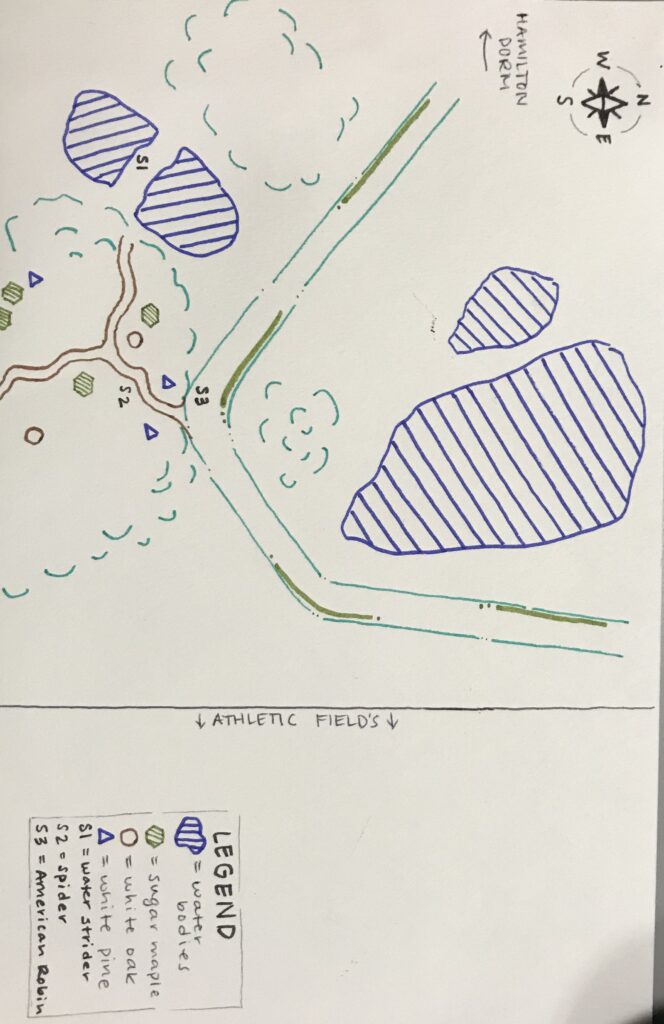CHANGES:
The six organisms that I discovered are accurate representations of the weather and seasonal change in my spot currently. The species I observed seemed to be common (slash typical fall) species. With the change in climate and the transition from autumn to winter, I was not surprised to find these species as opposed to others. The leaves found both on and off the trees at my phenology location have all significantly changed in terms of color and position from the last time I visited the spot. The leaves have changed from a reddy yellow, to a darker brownish tone. More leaves have fallen from the trees onto the ground, adding to the already thick layer of organic material that coats the forest floor. The evergreen trees that are not deciduous have obviously not shed any leaves and will remain this way for the rest of the season. The soils (in comparison to the last time I visited the spot) are somewhat more moist, considering the heavy rainfall we have experienced recently. The topography of my site has remained the same. Because of more leaves falling from the trees, more organic matter has been added to the top soil. It was somewhat helpful to visually picture my location from a birds eye view. I drew my map from memory, including the species I found, the water bodies present, and some of the most common trees found at my site. The next time I visit my location, I imagine I will be able to picture it from a birds eye view and have a great understanding/appreciation for my phenology spot.
SPECIES:
- American Robin – scientific name: turdus migratorius, Family: turdidae, genus: turdus, class: aves
- Earth worm – annelida, class: oligochaeta, family: megadriles
- Bridge Orb weaver spider – scientific name: larinioides sclopetarius, family: araneidae, genus: larinioides, class: arachnida
- Ochre dagger moth – scientific name: acronicta morula, class: insecta, family: noctuidae, genus: acronicta
- Common Squirrel – family: sciuridae, class: mammalia, order: rodentia, phylum: chordata
- water strider – scientific name: gerridae, kingdom: animalia, class: insecta, suborder: heteroptera

